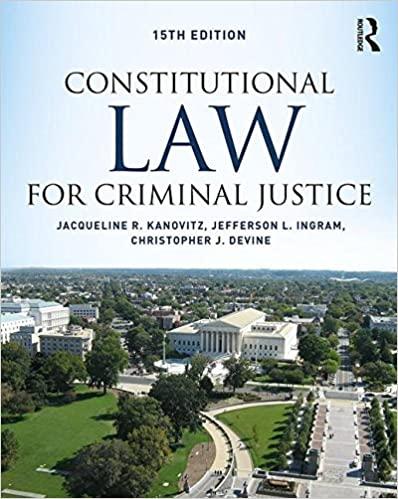Question
Please help me answer with a deep explanation for the question below based on the story: As the financial performance of the infamous energy company
Please help me answer with a deep explanation for the question below based on the story:
As the financial performance of the infamous energy company Enron dipped, its audit firm,ArthurAndersen, worried that Enron's accounting and financial statements were doubtful. On October 16, 2001, Enron refused to change its earnings release in response toAndersen's concerns.Andersenwas preparing a statement about the release. Nancy Temple, legal counsel forArthurAndersen, e-mailed back and forth with David Duncan, the audit partner for the Enron account in Houston, about the content of theAndersenstatement on Enron.
Later that same day, Temple also sent an e-mail toAndersen's internal team of accounting experts and attached a copy of the company's document policy. On October 20, the Enron crisis-response team held a conference call during which Temple instructed everyone to "[m]ake sure to follow the [document] policy." On October 23, 2001, then-Enron CEO Kenneth Lay declined to answer questions during a call with analysts because of "potential lawsuits, as well as the SEC inquiry." After the call, Duncan met with otherAndersenpartners and told them that they should ensure that team members were complying with the company's document policy. Another meeting for all team members followed, during which Duncan distributed the policy and told everyone to comply. These and other, smaller meetings were followed by considerable shredding and destruction of both paper and electronic documents.
On October 26, 2001, one ofAndersen's senior partners circulated aNew York Timesarticle discussing the SEC's response to Enron. His e-mail commented, "[T]he problems are just beginning and we will be in the crosshairs. The marketplace is going to keep the pressure on this and is going to force the SEC to be tough." On October 30, the SEC opened a formal investigation and sent Enron a letter that requested accounting documents. The document destruction continued despite reservations by some ofAndersen's managers. On November 8, 2001, Enron announced that it would issue a comprehensive restatement of its earnings and assets. Also on November 8, the SEC served Enron andAndersenwith subpoenas for records. On November 9, Duncan's secretary sent an e-mail that stated, "Per DaveNo more shredding. ... We have been officially served for our documents." Enron filed for bankruptcy less than a month later. Duncan was fired and later pleaded guilty to witness tampering, a plea he later withdrew.
Who is criminally liable for the document shredding? The employees who actually did it? The managers who ordered it to begin with? The company itself? Were they technically not in violation of the law during the document destruction because there was no formal notice until November 8? [ArthurAndersenLLP v U.S., 544 U.S. 696 (2005)]
Step by Step Solution
There are 3 Steps involved in it
Step: 1

Get Instant Access to Expert-Tailored Solutions
See step-by-step solutions with expert insights and AI powered tools for academic success
Step: 2

Step: 3

Ace Your Homework with AI
Get the answers you need in no time with our AI-driven, step-by-step assistance
Get Started


